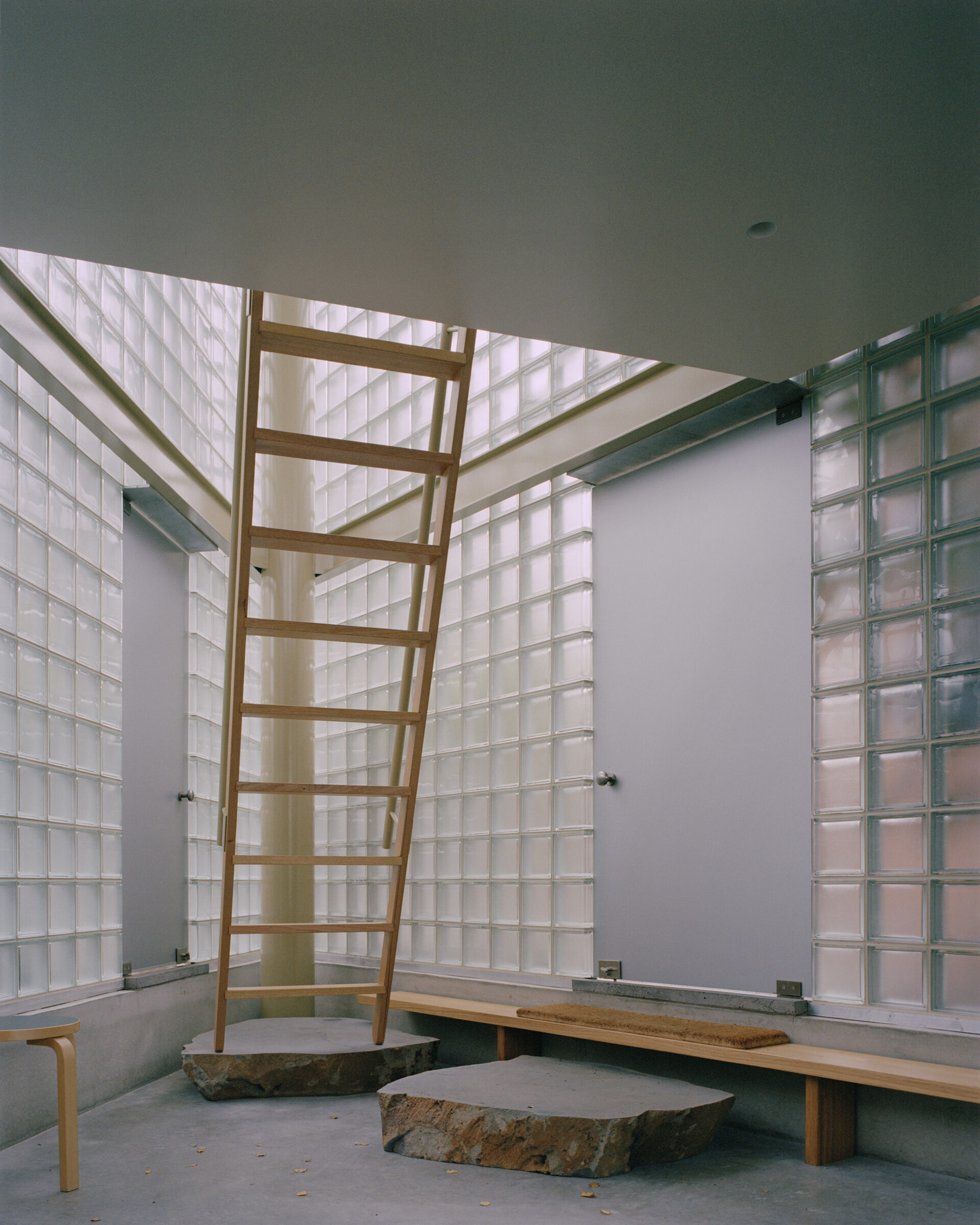In the United States, glass blocks began appearing in patents in the 1870s as part of vaults and skylights, but it wasn’t until 1881, when a patent was filed for “glass building block and building,” that a brick-like, hollow-core glass item arrived. Its inventor, C. W. McLean, speculated that the product would be ideal for the walls, partitions, and floors of hospitals and infirmaries. The rest is history. Glass block was regularly used in modernist buildings, but it met its full expression in postmodernist compositions, where its 8-inch–square format, often laid out in piano curves, seemed ubiquitous. Today, its usage invites a warm feeling of translucent history, as it thickens light into a cast, luminous form.

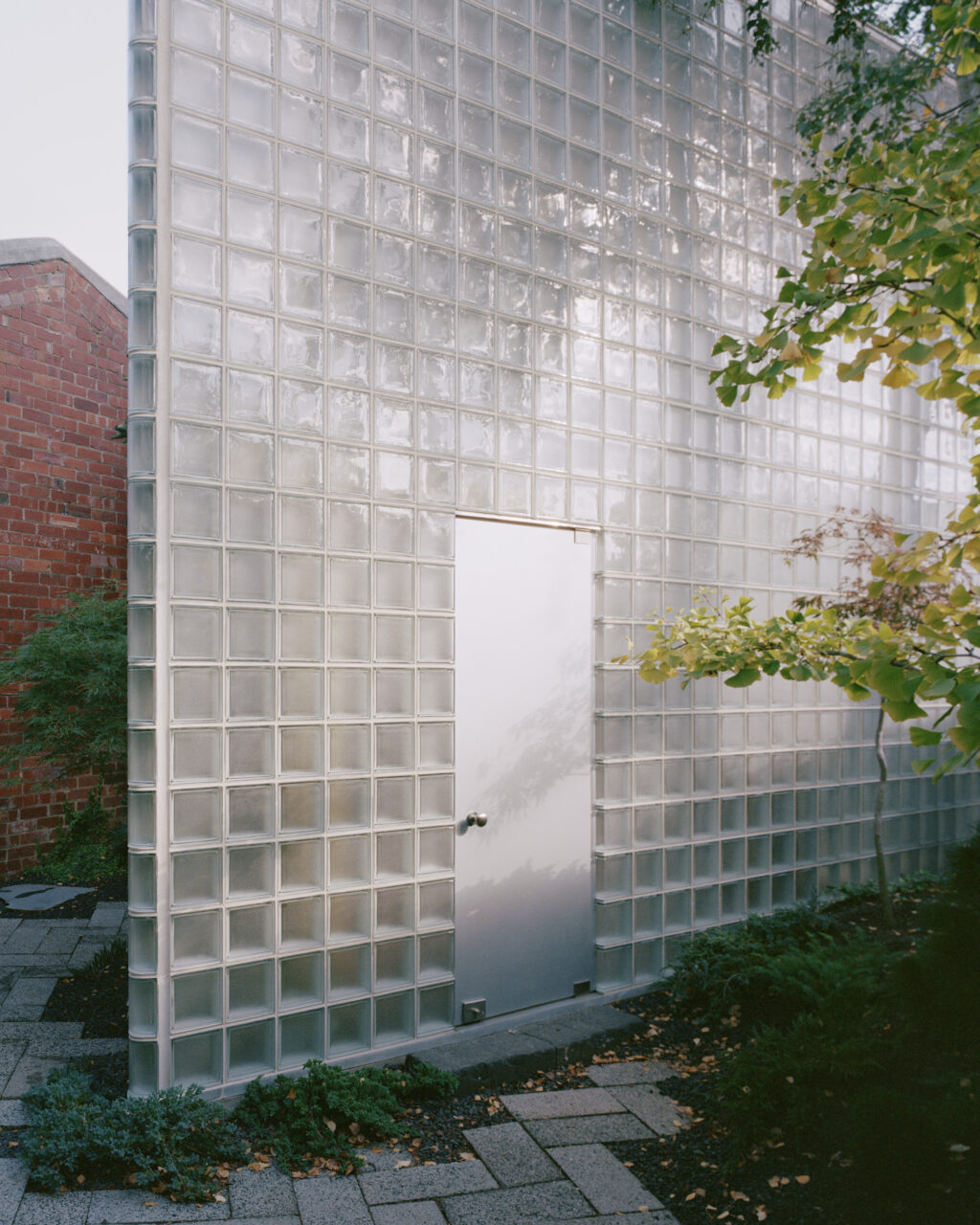
The material is put to impressive use in Outbuilding, with Deep Garden: a small project by Baracco+Wright Architects that adds a small back building behind a 1980s, concrete-block house designed by Ross Perrett in Melbourne, Australia. The architecture practice, led by Mauro Baracco and Louise Wright, often takes “on simple geometries and restrained material palettes that prioritize the spatial condition and rely on their relationship with landscape,” as the duo wrote on their website.

This particular project is only about 280 square feet in area and consists of a single story with an interior mezzanine. It takes the shape of a former driveway and avoids the roots of a large birch tree nearby. The outbuilding is faced in glass block, partly a response to the concrete-block elevations of the existing structure. The addition begins from a point and expands outward toward the rear property line, visually enhancing the backyard’s depth. The resulting “wedges” of space on either side remain as overgrown garden zones.
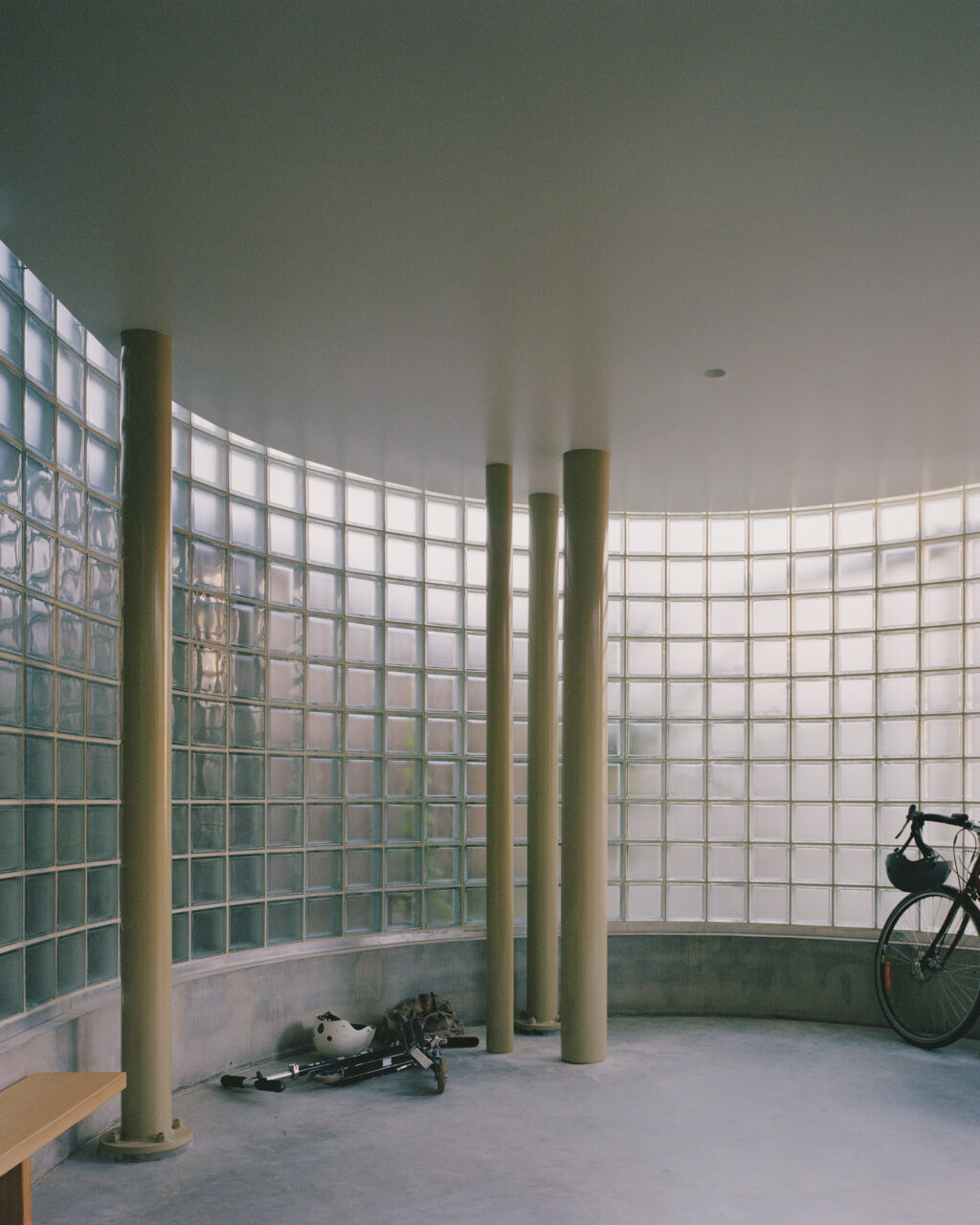
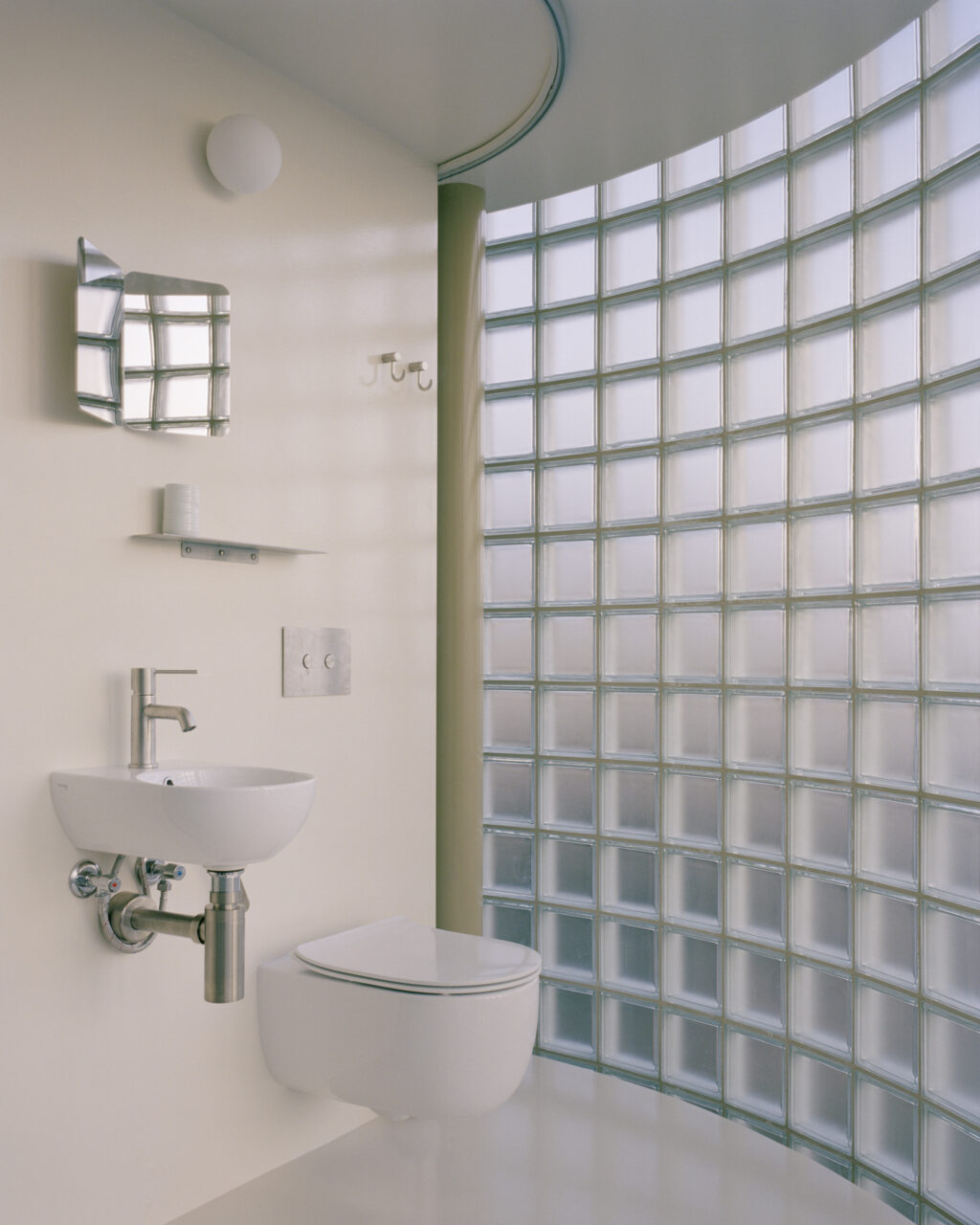
Accessed via opaque doors, the interior is illuminated but spare. Immediately inside, one steps down “into” the foundation via a wooden bench or cut discs of stones; a ladder quickly leads upstairs. The program is banal enough: It provides a guest bedroom while offering storage space for items like bicycles and garden equipment. The glass block is uninterrupted horizontally but is braced with steel at a height that aligns with the mezzanine’s structure, and the tan/yellow steel-tube columns become confused with plumbing stacks. Above, an open bedroom is interrupted by a circular bathroom/shower arrangement, which is concealed with a curtain.
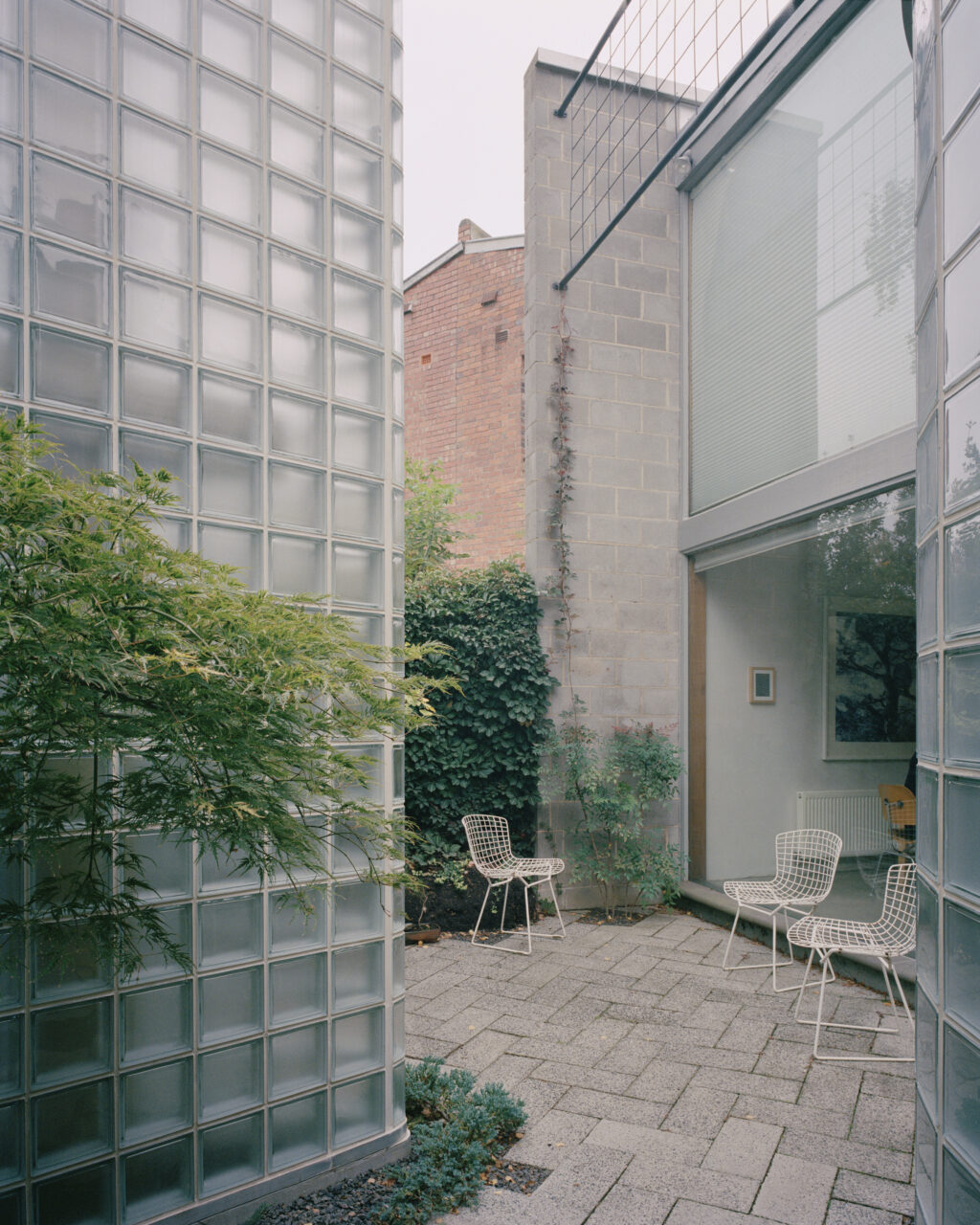
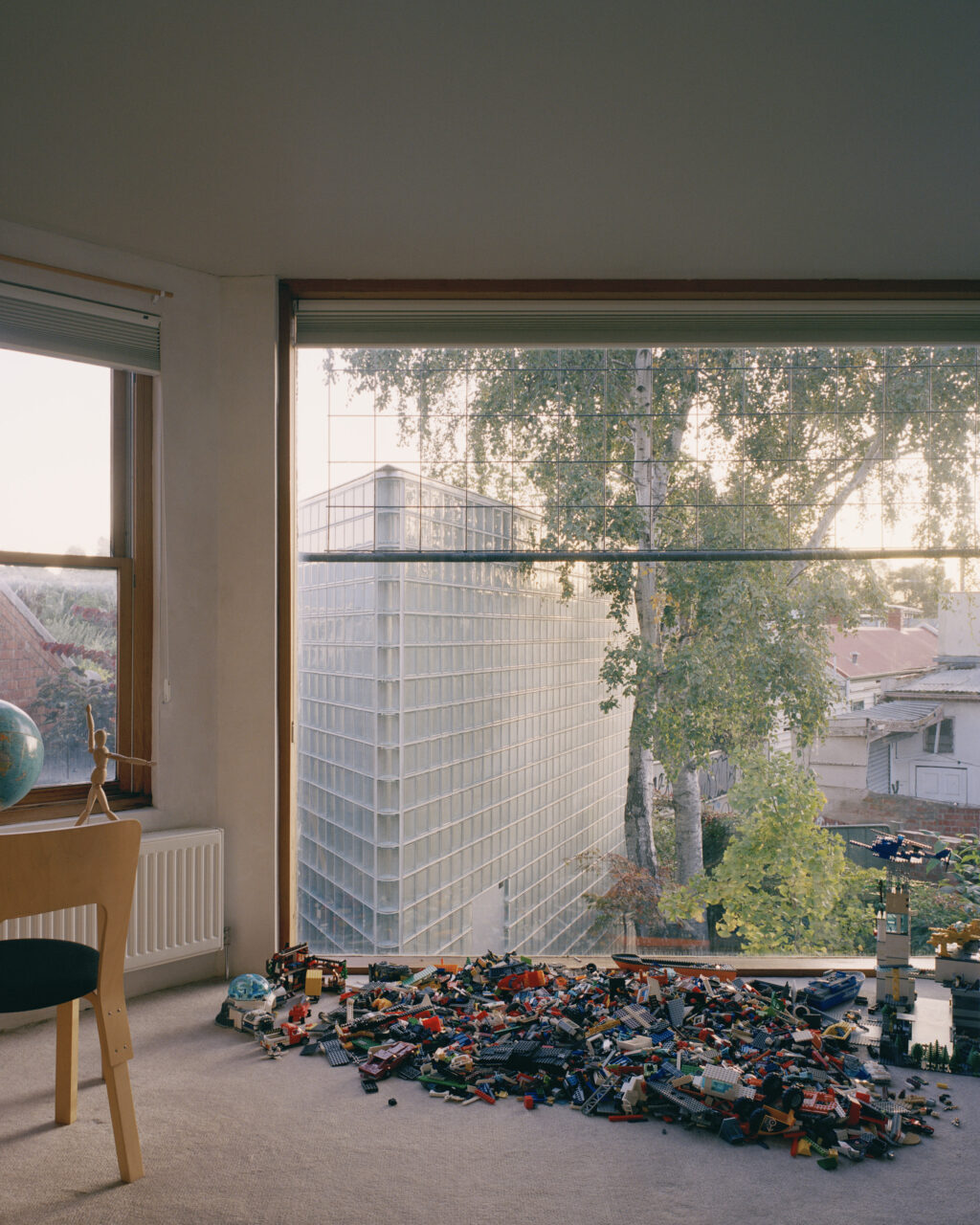
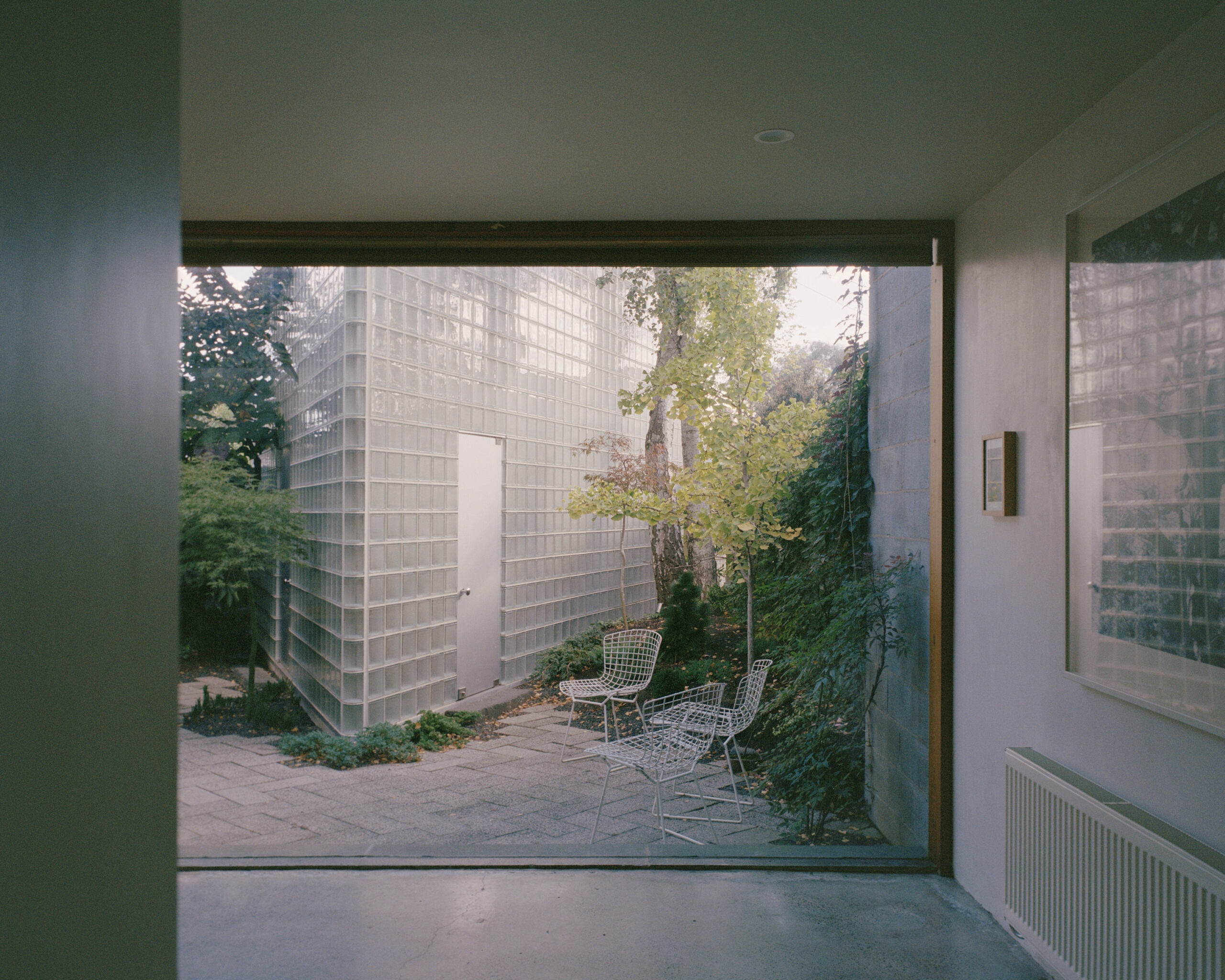
As seen in Rory Gardiner’s photographs, when seen through the back windows, the building blends into the larger life of the existing home, even on the upper level where it perches behind piles of LEGOs. But it also adopts a modest profile within the wider neighborhood, pleasantly residing behind the garden’s branches and leaves. Each pixel becomes kind of like a camera, distorting and holding the sunshine that passes through its lenses. The effect is particularly nice from the inside when the foliage bunches up against the facade, tapping on the glass.

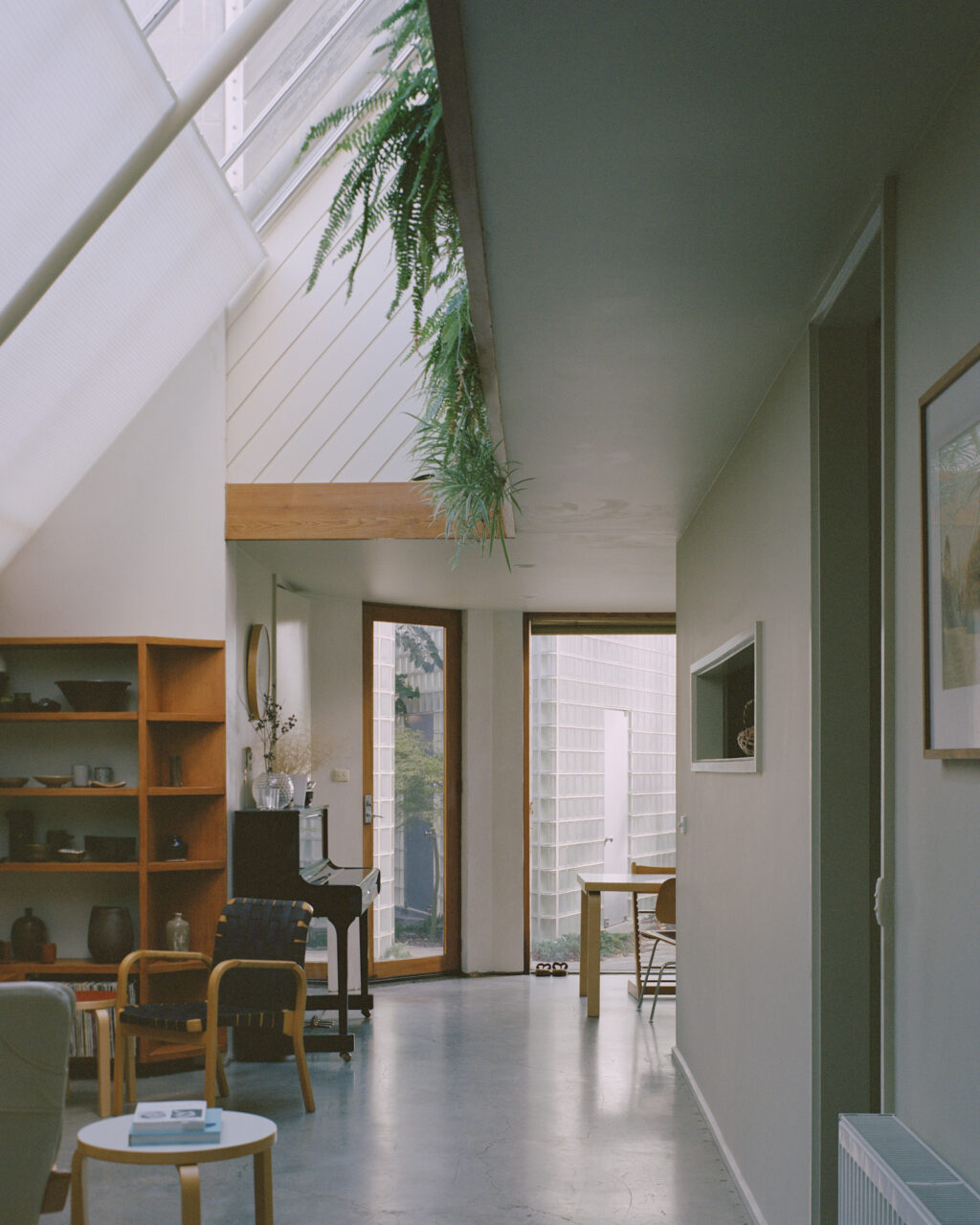
I imagine it’s even better in the new sauna, a tight circle also structured in glass block as seen in the project’s plan, and especially when the steam fogs everything up. Being enveloped within a hot, light-filled cloud seems like a welcome escape.
